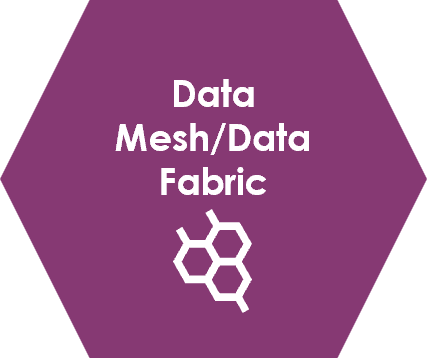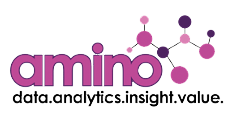
Data Mesh / Data Fabric
What is it?
Data Mesh is an organisational approach to developing and operating data platforms that overcomes the pitfalls of large, monolithic platforms. Unlike warehouses, lakes, and lakehouses, Data Meshes are federated models for the data platform, delivery, and management.
A Data Mesh isn’t tied to any specific tool or platform and instead refers to a design strategy for a decentralised data platform. There are four key principles:
- Decentralised domain-oriented data ownership: In a data mesh setup, all data is owned and managed by the business. However, different departments or business areas will take ownership of the different types of data.
- Data as a product: This means treating data as reusable assets, called Data Products. Each Data Product has a clear purpose or business goal, alongside an owner responsible for its delivery, management, and alignment with business needs.
- Self-service platform: To enable agility and independence, Data Products should be usable by non-technical business users through mediums like low-code and no-code platforms.
- Federated data governance: To maintain global standards for security, data quality, and legal compliance, each team that handles data should follow a pragmatic governance framework.
A Data Mesh enables organisations to build business-focused data products but often requires a significant business change. Experts in business domains must lead government, management and access of specific data sets.
A Data Fabric integrates data across different enterprise infrastructures, including cloud, hybrid, and on-premise deployments. This integration, coupled with putting data in a common format, gives organisations a single view of their data estate and how datasets relate to metadata. It often requires significant technology investments, though this depends on existing infrastructure, systems and processes.

Why is it important?
Both approaches reduce the problems associated with centralised, monolithic data platforms. Traditional data methods and architectures are costly, inflexible and often incapable of meeting complex business needs. Data Mesh and Data Fabric are, on the other hand, more modern approaches to handling data that offer flexibility, scalability, and alignment with organisational goals.
However, prioritising Data Mesh or Data Fabric depends on an organisation’s needs and structure.
- A Data Mesh is a more decentralised approach. It relies on the relevant business area taking on ownership of the data they use, thereby improving data quality, governance and access.
- Data Fabric, on the other hand, uses a centralised approach. It enables end-to-end integration of data pipelines and cloud environments to provide a single view of the organisation’s data estate.
How Amino can help you deliver this
Amino approach to data management is wholly aligned with modern techniques, including Data Mesh and Data Management.
Reforming an organisation’s data solutions and capabilities, however, does not need to be disruptive. We have always advocated for incremental approaches that depend on an organisation’s current maturity and desired target state. As part of this, Amino also establishes pragmatic governance that supports and assures delivery rather than becoming a bottleneck to rapid progress.
We have worked with many organisations to support them on their journey into Data Mesh and Data Fabric, providing real-world guidance informed by extensive experience. Moreover, Amino has full end-to-end capability in strategy, design, delivery and operation of data mesh and data fabric, enabling us to ensure that the benefits of these approaches are fully realised.
Please contact us to discuss how we can help you with your data mesh and data fabric requirements.
